"Flux Density Testing" - We Don't Know Whether To Laugh Or Cry!
Here at the FOA, we get lots of calls for help. Most of those calls deal with issues involving fiber optic testing. Recently we got this email:
Subject: What is a Flux Density Test?
To: <info@thefoa.org>
We have a project that requires to perform a Flux Density Test for the fiber optic cable. Please see below.
Contractor's Field Test
Verify the complete operation of the data transmission system in conjunction with field testing associated with systems supported by the fiber optic data transmission system as specified in Section _____ prior to formal acceptance testing. Field tests shall include a flux density test. These tests shall be performed on each link and repeated from the opposite end of each link.
.....(goes on to a section calling for OTDR testing on every fiber in every cable on the reel and a large number of installed cables that we were told are 50-200 feet long (~15-60m) maximum. Refers to a TIA standard that is relevant to fiber manufacturing testing.)
Neither we nor our subcontractor know about this test. We found some information about Encircled Flux Testing but we do not know if it’s the same thing.
Is this the same as the OTDR testing?
We talked to the contractor and got more of the story. The quotes above were from contract documents for a fiber optic installation issued by a US Government agency. The email indicates that there was some confusion or unfamiliarity of fiber optics and what should be required in a statement of work, RFQ or contract. The person from the contractor who contacted us does not have a FOA CFOT and only knew about the FOA from a Internet search. As we usually do, we sent them links to the appropriate pages on our website for clarification.
Later, we did more research and found at least one document posted online from a military group that used the term "flux density" to refer to the "power budget" but we don't know if that was the case here, and a "flux density test" was not defined.
I'm sure you understand why we say we did not know whether to laugh or cry! Here is a legal document calling for what appears to be a nonexistent test and OTDR testing in an inappropriate application. And a contractor who was puzzled by it all.
Humorously, it made is think that someone needs to build a mode conditioner and call it a "Flux Capacitor" right out of the movie Back To The Future. <g>
But seriously, how did a US Government agency write this? Either they knew just enough to be dangerous or misunderstood what some salesperson told them (assuming the salesperson knew what they were talking about.) Either way, it created a potentially expensive problem for the contractor and left the contracting agency with a big bill for a lot of useless data and little useful information on the quality of the installation.
The TIA FOLS (Fiber Optic LAN Section) has had similar discussions about the lack of knowledge of testing and the problems it has caused the manufacturers of fiber optic products.
Here at the FOA, we have been doing everything we can to make it easier for contractors and users to understand the proper way to test fiber optic cable plants. Pages of information in our online Guide on testing, videos on YouTube, our free "1 Page Standards", free downloads of the NECA/FOA installation standard, self-study programs on Fiber U and even our new "QuickStart Guide to Testing" (see below). Next up will be a series of webinars with one of the magazines. What more can we do?
Please - Consider it your duty to educate customers. Join the FOA and fiber optic manufacturers, distributors, etc. in trying to educate users about fiber optics and how cable plants should be tested. Send them to the new FOA "QuickStart Guide to Testing" (see below) and our free "1 Page Standards" which can be inserted in project documents. Save everybody, including us here at FOA, a lot of trouble.

In our continuing quest to help people understand how to test fiber optic cable plants and communications systems, we've created a "QuickStart Guide to Fiber Optic Testing." It's a simple, step-by-step guide on how to test fiber optic cable plants, patchcords or single cables and optical power from transceivers. It's as straightforward as it can get - what equipment do you need, what are the procedures for testing, options in implementing the test, measurement errors and documenting the results.
It can't get much simpler.
Send anybody you know who needs to know about fiber optic testing here to learn how it's done in a few minutes.
President Obama Signs Executive Order to Make Broadband Construction Faster and Cheaper
The President one June 14 signed an Executive Order to make broadband construction along Federal roadways and properties up to 90 percent cheaper and more efficient. The Executive Order (EO) will require the Departments of Agriculture, Commerce, Defense, Interior, Transportation, and Veterans Affairs as well as the US Postal Service to offer carriers a single approach to leasing Federal assets for broadband deployment. The EO also requires that available Federal assets and the requirements for leasing be provided on departmental websites, and it will require public tracking of regional broadband deployment projects via the Federal Infrastructure Projects Dashboard (permits.performance.gov). In addition, the Executive Order will direct departments to help carriers time their broadband deployment activities to periods when streets are already under construction—an approach that can reduce network deployment costs along Federal roadways by up to 90 percent.
Read the complete text from the White House. Especially be sure to read the "Fact Sheet"
This is really a big deal since getting permits for the construction of OSP cable plants can be complex and time consuming.
FOA and FTTH Council MENA Present FTTH Training In Beirut
The FTTH Council MENA (Middle East & North Africa) and the FOA sponsored a special week-long, hands-on training course in Beirut for those in the Middle East area. Ian Gordon Fudge of Fiberdk was the instructor.The 5 day long course covered a CFOT review and the FOA FTTH and Design specialties. Plus it offered the opportunity to take the FOA certification exams.
How did it go? Here is what one participant posted on the FOA Facebook page:
"Five Fruitful days crowned by three Certifications.
Thanks FTTH Mena Council, Thanks FOA and Thanks Ian.
By the way, To all who wants to take course with Ian, it's crucial to note that he is a WALKING FIBER OPTICS ENCYCLOPEDIA!!! He's got TONS of practical examples from all over the World, benefit from that."
FTTH Council MENA
Verizon Offers FiOS FTTH Speeds To 300Mb/s
In a move that shows both how competitive broadband services have become and how capable FTTH really is, Verizon has increased it's top speed offering to subscribers of its FiOS FTTH services to 300Mb/s downstream and 65Mb/s upstream. A driving force in the upgrade is consumers appetite for online video which now makes up the majority of all Internet traffic in the US. The upgrade is currently available only to subscribers with the faster GPON connection. Some earlier BPON FiOS subscribers are being upgraded to GPON to allow the higher speed services.
Lightower Fortifying Existing Ultra Low Latency Network with Route into Major Financial Facility in Mahwah, New Jersey
Lightower Fiber Networks, a metro fiber and bandwidth provider in the Northeast, announced it will be building into the primary financial exchange data center located in Mahwah,New Jersey. With dense network already in place near the Mahwah facility, Lightower will be ready to build to the facility as soon as access is available to service providers. Lightower will also be offering points-of-entry,geographically diverse laterals, and geographically diverse routes to thefacility.
Lightower has the most fiber routes and access into more service locations of any metro fiber provider in the New York City and northern New Jersey area. Solutions for the financial services industry are a major focus for Lightower, as demonstrated by their highly successful "Ultra Low Latency Network." This financial services network includes hubs at 15 strategic data centers and liquidity centers in the region.
More on Lightower
Recap: Recent FOA Newsletter Articles You Might Have Missed
FTTO: Fiber To The Office
At our seminars in the UAE with eSharp Consultancy, Cliff Walker presented information on his work designing "fiber to the office (FTTO) networks. The concept is based on using fiber to connect large switches in the equipment room to smaller switches with 4 ports at the outlet. You can read Cliff's paper on the airport system to see estimates of the cost savings using FTTO.
Read Cliff Walkers paper on FTTO.
More On Fiber Use In Wind And Solar Power
Craig Bowden, FOA Master Instructor at FiberNexxt in NH, presented a program at the New England Fiberoptic Council recently on fiber in wind power. His presentation is available for downloading here. It's full of good illustrations and photos that tell the story.
Patchcords: You Get What You Pay For Says Siemon
Siemon is a global manufacturer of cabling products that has been a big contributor to international standards. Recently they tested patchcords procured from several sources and found out what you might expect - quality suppliers produced quality products but cheap suppliers supplied, well, you can read it here:
http://www.siemon.com/go/fiberjumper
Splicing SM Fibers - Regular to Bend-Insensitive Fibers
FOA Master Instructor Joe Botha has been using his students to do some good research. His latest project was splicing different types of singlemode fibers including bend-insensitive type G.657. You will want to read Joe's report. Read it here.
Joe has studied how long does it take to splice a cable. It's not a simple answer as it varies with the number of fibers in the cable and the work setup, including whether one or two techs are working at a job site. Here is Joe's splicing analysis.
Joe also has an excellent writeup on how to choose singlemode fiber that helps understanding the different types of G.6xx fiber. Read it here.
Confused By Standards?
You are not the only one! As Bob Metcalfe, co-inventor of Ethernet, once said at a conference "The wonderful thing about standards is we have so many to choose from!" But the Siemon Company, an active participant in standards activities for decades, has tried to give some order to this chaos with a new website Standards Informant where they cover the TIA, ISO /IEC and IEEE standards that affect cabling and networks. If you need to keep up with standards, sign up for their email newsletter too.
Should Standards Be Free?
It's an interesting issue, since standards are often included as mandatory requirements in project documents, especially for government agency projects. But the issue has been discussed a lot recently, including in the US Congress, leading to this comment in the US Federal Register:
"(3) When agencies use incorporation by reference to create mandatory standards, the legality of charging the public for access to material incorporated by reference by the voluntary standards organizations that may have developed them, under copyright, is in serious doubt. Veeck v. S. Bldg. Code Cong. Int'l, 293 F.3d 791 (5th Cir. 2002). Free availability to the affected public of incorporated materials is of particular importance, as already suggested, when those materials create mandatory obligations whose violation could have adverse consequences, whether directly or on others whose interests may be affected by the behavior it controls. Measures such as the Unfunded Mandates Reform Act make plain that Congress has set its face against agency actions that export costs to others arguably unable to bear them. And in the age of information, secret law, that the public must pay for to know, is unacceptable. Today, binding law cannot be regarded as “reasonably available” if it cannot freely be found in or through an agency's electronic library. Perhaps this would require agencies to pay license fees for their use of such standards—and if so, they would then have proper bargaining incentives to keep those fees low."
The implication of this is obvious; a US government agency, or by implication any government agency in the US, would have problems including any industry standard in one of their documents if the document were not available free. We've commented on this many times and agree with this opinion and it's one reason that FOA has made its standards available free.
FOA Standards:
FOA has joined the American National Standards Institute (ANSI) to be able to keep up to date on more standards activities. ANSI is certainly a diverse organization. In March, when FOA joined ANSI, the list of new ANSI members included NASDAQ, Bonneville Power Administration and Broward (FL) County Sherriff Office Crime Lab!
FOA now offers free standards for testing the installed fiber optic cable plant, patchcords and cable, optical power from transmitters or at receivers and OTDR testing. Look for the "1 PageStandard" web page and in the FOA Online Reference Guide.
Go to the FOA "1 Page Standards"
Free For FOA Members: NECA/FOA 301 Fiber Optic Installation Standard
Because of its importance to users, contractors and installers of fiber optic networks, The FOA and NECA have agreed to make the NECA/FOA 301 Fiber Optic Installation Standard available free to FOA members. It's specifically written to be used in contracts to define "installation in a neat and workmanlike manner." FOA members can go here for instructions on how to download your free copy.
Three New Fiber U Online Self-Study Programs: Design, FTTx and Testing
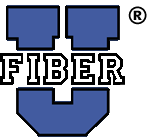
FOA has added three new free online self-study programs to our Fiber U web-based training site. The new programs cover topics that have been requested often: "Fiber Optic Testing," "Fiber Optic Network Design" and "FTTx." The Testing course is a comprehensive self-study course on all aspects of fiber optic testing. The Design course leads you through lessons on fiber optic network design and planning, then concludes with several online design exercises to test your understanding. The FTTx course has lesson plans covering what the "x" in FTTx means, network architectures, installation and testing, then concludes with a design exercise. All use the FOA Online Guide or our textbooks and our YouTube videos as study materials. If you are interested in the FOA Specialist Certifications in Testing (CFOS/T), Design (CFOS/D) or FTTx (CFOS/H), these are excellent study guides. See Fiber U for links to the new courses.
We are considering using these self-study courses as part of online instructor-led courses using Linked-In. We have a new LinkedIn group, "Fiber Optic Training" (see below) which will be used for this. Join now for these courses.
FOA LinkedIn Group On Fiber Optic Training

FOA has started a new LinkedIn group called "Fiber Optic Training" dedicated to discussions on fiber optic training. Anyone can join our new Linked In fiber optic training group. We're experimenting on teaching instructor-led online courses on LinkedIn - watch for announcements on the FOA LinkedIn group and Fiber Optic Training Group. Take a look and join the group.
2012: The Year of The OTDR
Most of the technical and testing questions we get here at FOA involve misunderstanding of OTDR testing. A number of FOA master instructors have suggested we focus on OTDR training, both in our schools and online, to minimize the problems, so we have declared 2012 "The Year of The OTDR." Look for special articles, a new "1pStandard" and other information that will make these instruments less enigmatic!
What A FOA Instructor Said: "So you've had discussions about making 2012 "The Year Of The OTDR" for training. I couldn't agree more. So many clients, contractors and sales people we meet have so little knowledge about OTDR that it's astounding. ... OTDRs are still subject to interpretation, user error and (in some cases) dead zones that can still effect the results. Everyone we teach is initially overwhelmed and looking for "E-Z OTDR" that is fully automated...!"
The Simplest OTDR Measurements Can Be Confusing - Like Length
The lead article above is perfect for our OTDR article this month. The contract documents required OTDR testing for premises multimode cables only ~50-200 feet long (~15-60m). Most OTDRs cannot even see the shortest cables on this job and the ones that can be resolved require careful analysis to ensure not being confused by ghosts or gainers. Plus, after testing all those cables, an incredible hassle with launch and receive cables longer than most of the cables being tested, you can't be sure you have cables that have the proper loss anyway. We'll bet the contractor plugged in his new OTDR, hit the autotest button, and got his "pass" without every knowing what he was doing.
OTDR Tip Of The Month: Three Good Practice Tools For OTDRs, All Free
You may already know that the FOA has a free OTDR Simulator you can download from our website (go here for directions) that allows you to practice using an OTDR on your PC, seeing the effects of changing setup parameters and analyzing dozens of real world traces. But here are two more tools that can be good for practice.
AFS OTDR Online Demo
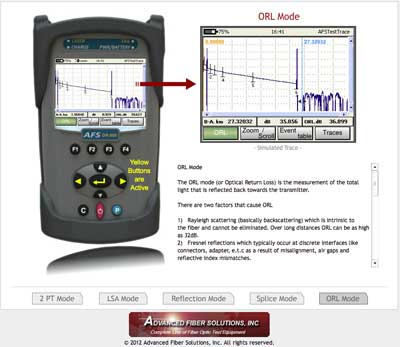
AFS has an online interactive demo of their new OTDR that allows you to see how an OTDR makes measurements. You use the yellow buttons in the center of the OTDR to set the markers to make measurements. Very well done. Go to http://www.afsi.us/otdr/otdr_mode.php for the demo.
"Fiberizer" APP Reads, Analyzes OTDR Traces

Fiberizer is a iPhone/iPad APP that reads industry-standard ".sor" format files and allows trace analysis on your iPhone or iPad. An android version is in the works too. Read more about Fiberizer. And here are more directions on its use.
Free FOA iPad App Calculates Loss Budget
FOA LossCalc
FOA LossCalc estimates the optical loss of a fiber optic link. This will save time for the installer of a fiber optic link needing to know whether test results are reasonable and/or make a "pass/fail" determination. It can also help the designer of a link to determine if communications equipment will operate over this link.
By choosing the type of link (singlemode or multimode) and specifying the length of the fiber and numbers of connections and splices, it will calculate the end to end loss of the link. The app has default specifications for singlemode and multimode links or the user may create custom setups with specifications appropriate for any application.
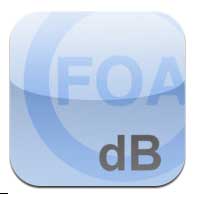 http://itunes.apple.com/us/app/foa-losscalc/id476262894?mt=8&ls=1 http://itunes.apple.com/us/app/foa-losscalc/id476262894?mt=8&ls=1
More New Lectures on 
FOA Lecture 27, Fiber Optic Datalinks
10 new lectures on premises cabling have been added to the FOA YouTube channel along with lectures on fiber to the home - FTTx - and Loss budgets, making 26 fiber optic lectures total.
Here is a list of the current lectures (plus there are 28 hands-on videos too!). We're looking for ideas for topics for future lectures. Send your ideas to <info@thefoa.org>.
Events of Interest

FOLS Webinar
Preventing Network Failure by Cleaning and Inspecting Fiber Optic Connectors
Presented by Run Ron, AFL
AFL has conducted extensive research and determined that contamination is a major cause of network failures. In this seminar you'll learn how and when to clean fiber optic connectors and when and how to inspect them.
Tuesday, June 12th from 11:00 a.m.
to 12:15 p.m. EST
Log-in information for the Webconference will be sent to you after you register.
Register Now
Also From FOLS:
LAN Standards, News & Trends: 2012 Update
Presented by Pete Pondillo, Standards Chair, TIA's Fiber Optics LAN Section
Available Online, Register Here
Exfo Seminars: Eliminating Guesswork in Next-Gen Fiber Testing
Join EXFO's experts for this half-day seminar dedicated to fiber testing in testing for metro, PON and cell backhaul networks, as well as smart grids.
Monday, April 23 - Los Angeles
Tuesday, April 24 - San Diego
Wednesday, April 25 - Phoenix
Click here to register.
2012 FTTH Conference & Expo - September 23-28, Dallas, Texas
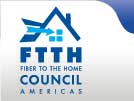
This event is much more than North America's biggest fiber to the home trade show. With dozens of track sessions, panel discussions and other educational presentations, the 2012 FTTH Conference & Expo will get you up to speed on the latest in FTTH technologies, network design, business operations, and more. Click here for more information on this year's event in Dallas.

The economic impact of advanced broadband networks on a city and the entire region
THIS IS THE FIRST conference of its kind in this country - an event devoted entirely to the relationship between a community's economic vitality and the presence of advanced broadband networks. Nations around the world have recognized this powerful linkage and responded to it - as have a growing number of communities in the United States. Each event in this new conference series will be held in a city with an advanced broadband system. Each event will have an impressive array of speakers whose mission will be to help attendees evaluate the options and opportunities and develop the optimal, affordable solution for their communities. The first conference is in Danville, Virginia - the Comeback City that bounced back from devastation with a visionary broadband strategy that's creating jobs and attracting the businesses and industries of tomorrow.
More info.
AFL to Host "Traveling" Advanced Splicing Seminars
AFL has launched advanced splicing seminars intended for engineers and professionals, as well as university students, engaged in fiber optic activities involving non-standard and specialty fusion splicing activities. Typical applications for these advanced splicing needs are often in the Medical, Oil and Gas, Fiber Lasers, Optical Manufacturing, and Aerospace markets. These seminars will cover a wide range of applications and solutions for difficult and challenging applications using advanced fusion splicing platforms.
- Seminars will be held in around the US and Canada.
- There is no charge for attending; however AFL will be conducting pre-registration in order to ensure availability of a proper facility depending upon the number of attendees.
- Details on the seminar, a current schedule and signup form are at http://www.stateofthearc.com/seminars/signup.html
Free Corning "See the Light" Seminars
Corning Cable Systems' See the Light team is coming to a city near you! Receive Free fiber optic training on a variety of topics including Termination Technology, Testing and Trouble Shooting, Fusion Splicing, and Preterminated Solutions. These interactive three-hour sessions provide students with a comprehensive overview of the latest technology. Fiber optic BICSI (CEC) credits apply (3).
Here is the current information and schedule.
JDSU Testing Webinars
You are invited to join JDSU for a complimentary series of educational webinars in early 2012. Each webinar, presented by a JDSU subject matter expert, occurs on the same day and time of the week and will last approximately one hour, including Q&A.
Go here to see the seminars offered and dates. IMPORTANT: use registration password: FONA1.
Don't forget to download your copies of the JDSU Testing Textbooks.
 What's New @ FOA What's New @ FOA
FOA Standards For Contractors, Designers, Installers and Users
Read more about them here. And above.
Go to the FOA "1 Page Standards"
FOA Certifications Recognized By US Department of Labor

All FOA Certifications have now been recognized by the US Department of Labor. The DoL reviews certifications and how they relate to job opportunities and training. The DoL Career OneStop website helps individuals explore career opportunities to make informed employment and education choices. The Web site features user-friendly occupation and industry information, salary data, career videos, education resources, self-assessment tools, career exploration assistance, and other resources that support talent development in today's fast-paced global marketplace.
FOA Certifications Listed By US Department of Labor - Career OneStop
US Department of Labor Recognizes FOA In New "Occupational Outlook Handbook"
FOA is listed in the new US Department of Labor "Occupational Outlook Handbook" in the section "How to Become a Line Installer or Repairer."

This website lists all sorts of interesting information, including what these workers do in their jobs, how they get trained and certified (where the FOA is referenced) and something everybody is interested in - sections on "Pay" and "Job Outlook" - see the red arrow above.
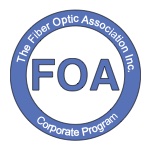 New Corporate Memberships New Corporate Memberships
FOA is now offering corporate memberships to companies involved in fiber optics as manufacturers, contractors, installers, etc. Read more. Among other benefits, Corporate Membership gives companies access to special FOA materials for educating customers and employees.

Two New Free Fiber U Self-Study Programs on Design and FTTx
There are two new free online self-study programs on Fiber U. Fiber Optic Network Design is for those interested in learning more about how ot design fiber optic networks or studying for the CFOS/D certification. FTTx is for those wanting to know more about fiber to the "x" - curb, home, wireless, etc. - or studying for the CFOS/H certification.
Got to Fiber U for more information.
FOA Certification On Outside Plant Fiber Optics
The FOA CFospT outside plant certification focuses on OSP fiber optic network design, installation and maintenance. A CFospT certified tech must know the ways that fiber is used in the OSP, how it is installed, tested and maintained. While a CFOT might only have a basic knowledge of fusion splicing and OTDR testing, for example, a CFospT will be knowledgeable and skillful in those areas - and more. Reference materials for the new CFospT are the printed textbook, the FOA Reference Guide to Outside Plant Fiber Optics (right) as well as eBooks from Amazon for the Kindle or Apple for the iPad/iPod/iPhone and the OSP reference section of the FOA Online Reference Guide which now includes a self-study guide to the CFospT exam.
More information on the FOA Outside Plant Fiber Optic Technician (CFospT) certification.
- Reference Books for FOA Certifications are now available on Kindle and iPad/iPhone
  
We have created three new FOA books to be used in training for FOA certifications and as reference books for contractors, installers and end users of fiber optics. These books have full curriculum support, including free curriculum materials for teaching FOA certification courses. Because we are self-publishing these books using more modern "publish on demand" technology, they are easier to keep up to date, easier to buy and much, MUCH cheaper!
All are now available in print and electronically in Kindle and Apple iBook versions. The basic fiber optic book is also available as a self-study program in an Apple APP for iPad/iPhone/iPod.
Details on the new book each of the new books are at the book pages linked to the photos above.
FOA iPad Apps
The FOA has just released its second APP for the iPad, a free "loss budget calculator," FOA LossCalc.
FOA LossCalc
 FOA LossCalc estimates the optical loss of a fiber optic link. This will save time for the installer of a fiber optic link needing to know whether test results are reasonable and/or make a "pass/fail" determination. It can also help the designer of a link to determine if communications equipment will operate over this link. FOA LossCalc estimates the optical loss of a fiber optic link. This will save time for the installer of a fiber optic link needing to know whether test results are reasonable and/or make a "pass/fail" determination. It can also help the designer of a link to determine if communications equipment will operate over this link.
By choosing the type of link (singlemode or multimode) and specifying the length of the fiber and numbers of connections and splices, it will calculate the end to end loss of the link. The app has default specifications for singlemode and multimode links or the user may create custom setups with specifications appropriate for any application. http://itunes.apple.com/us/app/foa-losscalc/id476262894?mt=8&ls=1
Self -Study in Fiber Optics
 Our first app is a self-study version of the FOA Reference Guide to Fiber Optics. The FOA APP builds on the FOA basic fiber optic textbook to create an interactive learning environment that builds on the iBook electronic version of the book to add a guide to use for self-study and real-time testing that provides feedback on what you have learned and correct answers to questions answered incorrectly. Our first app is a self-study version of the FOA Reference Guide to Fiber Optics. The FOA APP builds on the FOA basic fiber optic textbook to create an interactive learning environment that builds on the iBook electronic version of the book to add a guide to use for self-study and real-time testing that provides feedback on what you have learned and correct answers to questions answered incorrectly.
The FOA APP is priced at only $9.99, same as the iBook, so the self-study program is free. Download it from the Apple APP Store with your iPad or iTunes.
http://itunes.apple.com/us/app/foa-guide/id434354283?mt=8&ign-mpt=uo%3D4
NECA/FOA 301 Installation Updated
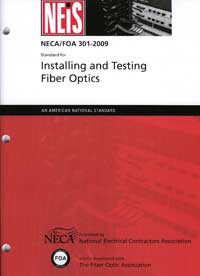
Standards cover components and systems and how to test them, but rarely get into installation issues. The FOA NECA 301 standard which covers installation of optical fiber systems has been revised for the second time, adding considerable new materials. This standard is derived from FOA educational material put in standards form and approved by ANSI as an American National Standard. It's specifically written to be used in contracts to define "installation in a neat and workmanlike manner." The standard is available from NECA. FOA members can go here for instructions on how to download your free copy.

2 New Lectures: About The FOA and FOA Standards, plus Fiber Optic Lectures, Premises Cabling Lectures Plus More Hands-On Videos
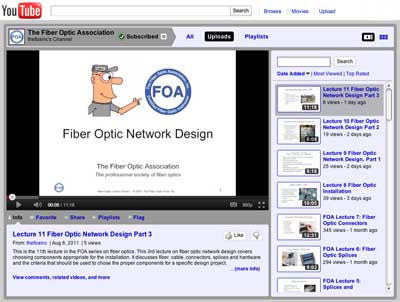
Below is a list of the current lectures (plus there are 28 hands-on videos too!). We're looking for ideas for topics for future lectures. Send your ideas to <info@thefoa.org>.
Hands-On Fiber Optic Videos show how it's actually done
Fiber Optic Connector Polishing Technique
The Fiber Optic Tester In Your Pocket (Cell Phone)
Insertion Loss Testing
Fusion Splicing
Mechanical Splicing
Fiber Optic Termination, Part 1, Setup & Tools
Fiber Optic Termination, Part 2, Jacketed Cable Prep
Fiber Optic Termination, Part 3, Adhesive Prep
Fiber Optic Termination, Part 4, Stripping Fiber
Fiber Optic Termination, Part 5, Connector Attachment
Fiber Optic Termination, Part 6, Polishing
Fiber Optic Termination, Part 7, Inspection
Fiber Optic Termination, Part 8, Distribution Cable Termination
Fiber Optic Cable, Part 1 Introduction
Fiber Optic Cable, Part 2, Zipcord
Fiber Optic Cable, Part 3 Distribution Cable
Fiber Optic Cable, Part 4 Breakout Cable
Fiber Optic Cable, Part 5 Loose Tube Cable
Fiber Optic Cable, Part 6, Armored Cable
Lectures On Premises Cabling
The FOA has added 10 more videos to our YouTube Channel, thefoainc. These are an introduction to premises cabling, covering applications, types of cabling, standards and installation practices for copper (UTP and coax), fiber and wireless. Like our lecture series on fiber optics, these provide a comprehensive introduction to the subject in short videos, typically 5-10 minutes in length, on each subject. Watch for more.
Premises Cabling Lectures on YouTube
"Hands-On" UTP Cabling Videos show how it's actually done
UTP "Cat 5" Cabling, Part 1, Tools
UTP "Cat 5" Cabling, Part 2, The Training Board
UTP "Cat 5" Cabling, Part 3, UTP Cable
UTP "Cat 5" Cabling, Part 4, 66 Block Punchdown
UTP "Cat 5" Cabling, Part 5, 110 Block Punchdown
UTP "Cat 5" Cabling, Part 6, Jacks
UTP "Cat 5" Cabling, Part 7, Testing
UTP "Cat 5" Cabling, Part 8, Plugs and Patchcords
View all the FOA YouTube video Lectures.
What's New in the FOA Online Fiber Optic Reference Guide
We have been updating the Online Reference Guide to keep up with changes in the industry and adding lots of new pages of technical information.
FTTx and Design Pages Updated
As we developed the new Fiber U self-study courses, we updated the FTTx and Design pages and added a FTTx installation section.
OTDR FAQs
Including FOA Master Instructor Terry O'Malley's tests on what the end of a fiber trace looks like with broken and cleaved fibers.
Frequently Asked Questions On OTDRS And Hints On Their Use
Testing FTTH
Basic guidelines for testing FTTH PON networks
Measuring Reflectance or Return Loss
It can be important but it's not so easy to test.
Fiber Optic and Premises Cabling Project Paperwork
Covering what are SOW, RFPs and RFQs and how they are created for a project.
Effects of Alignment and Fiber Geometry on Fiber Optic Connector Loss
With all the controversy about connector loss due to modal distribution, we sometimes forget the effects of component variations.
Fiber Optics For Wireless Networks
How wireless is not wireless - it needs fiber.
Learn More About OTDRs - Download a Free OTDR Simulator
More and more installers are being asked for OTDR testing but using these instruments is not easy. They are hard to set up properly and complicated to interpret the traces. Using the autotest function can lead to disastrous results! The FOA has a good tutorial on OTDRs on our Online Reference Guide and we added a free download of an OTDR simulator to the OTDR section so you can learn how to use an OTDR on your PC.
More New Info:
Links to manufacturers and distributors of fiber optic lighting products.
The FOA Online Fiber Optic Reference Guide has become very popular - perhaps the most popular technical website ever, typically with over 360,000 users downloading about 1.75 million pages in 2011! We continue updating materials regularly, keeping it as up to date as possible.
Find What You Want Using "Google Custom Search
 There's so much information on the FOA Tech Topics and Online Fiber Optic Reference Guide that even a well-organized Table of Contents isn't enough and when the material is always changing, an index is impossible to maintain. So the FOA is using the latest technology in search, Google Custom Search, which will allow you to search just the FOA Tech Topics and Online Fiber Optic Reference Guide for any topic you want to find more about. Try it! There's so much information on the FOA Tech Topics and Online Fiber Optic Reference Guide that even a well-organized Table of Contents isn't enough and when the material is always changing, an index is impossible to maintain. So the FOA is using the latest technology in search, Google Custom Search, which will allow you to search just the FOA Tech Topics and Online Fiber Optic Reference Guide for any topic you want to find more about. Try it!
Go to The FOA Online Fiber Optic Reference Guide.
School News
Quote from one of our certified instructors: I want to thank you and your organization for all the resources you provide for the students and the opportunity to offer the certification to the students. The fact that you published the book yourself to get the cost down and the unlimited free resources on your website shows a commitment to the public that is second to none. I let it be known to the students that the FOA is the best in the industry at supplying knowledge and resources related to the communication industry. I look forward to passing on the information that you provide for the industry.
Ian Gordon Fudge of FiberDK who presented the FTTH Council MENA/FOA seminar in Beirut recently travels over the world. Besides teaching fiber optics so well, he carries his camera and takes beautiful pictures like this one from a recent seminar in Greenland.

New Schools
The FOA welcomes the newest additions to our listing of FOA-Approved Training Organizations:
NY Transit Authority, FOA-Approved School #328
Consultronica, FOA-Approved School #755
Find a listing of all the FOA-Approved schools here.
It's Now A Lot Easier To Find A FOA-Approved Training Organization

Most phone calls we get regarding finding a FOA-Approved training organization want to know two things: what school is closest to me or what school offers the certifications I need. That can be difficult, since the FOA has almost 200 training organizations we have approved worldwide!
We've been looking at ways to make it easier, and we think we've got a good solution. In fact we have two solutions.
First we have added a sortable table of all the FOA-Approved schools.
You can also use our FOA Google Map Application to find FOA-Approved schools.
Here are links to the sortable table of all the FOA-Approved schools and FOA Google Map.
What Should A Fiber Optics or Cabling Tech Know and What Skills Do They Need?
The FOA has been updating its lists of KSAs (Knowledge, Skills, Abilities) for fiber and cabling techs. The updated list is now on the website for your information and comments - as fiber and cabling KSAs evolve as new technologies develop.
KSAs for fiber and cabling techs.
Good Question! Tech Questions/Comments Worth Repeating
Tech Hint: Did You Know You Have A Fiber Optic Tester In Your Pocket?
Yes! The camera in your cell phone is sensitive to infrared light - lots more than your eye - and can detect light in an optical fiber or from a transmitter. Chris Hillyer,CFOT/CFOS/I, Master Instructor, Northern California Sound & Communication JATC sent us some photos showing how this works. See below or the video now on YouTube. Update: You should check out your old cell phones before you recycle them. We've found older models use sensors which are better at infrared than the newer ones which take better pictures. This is a good use for your old cell phones hiding in the drawer!
Cleaning For High Power Systems
Q: Are there any documents that discuss how to clean fibers in high power DWDM/fiber amplifier systems?
A: The problem with dirt on high power fiber optic systems has been known for ages. When fiber was first used for industrial cutting and laser surgery systems, the users found that dirt on the end of the fiber would practically explode, causing pits in the end of the fiber and eventually ruining it. Our first encounter with this was with industrial cutting systems which used metallic connectors. If you are not finding materials specific to high power systems, I'd bet it's because DWDM systems are the norm today and the CATV industry has dealt with high power for a decade. Telcos tell us they prefer to add wavelengths to current fibers rather than turn up new fibers because it's cheaper and easier. Thus all cleaning is intended for these systems.
More on cleaning.
Gainers
Q: I understand that gainers can result from differences in core diameters and mode field diameters. My understanding is that a larger core diameter after a splice can create a gainer, due to increased scattering from the increased CSA. This would imply the same relationship for MFDs. Do you have a source that presents an explanation of the splice loss with differing MFDs?
A: MM fiber works on "geometric optics" or "classical optics" while SM fiber works on "quantum mechanics!" When you reduce the size of the optics to a small multiple of the wavelength of the light, strange things start happening. In SM fiber, the light actually travels outside the geometric core - depressed cladding fibers have been used to help confine the light in the core- and it's a significant amount - and it's dependent on the wavelength of the light, so more light travels outside the "core" at 1550 than 1310.
One way of explaining why a fiber with larger MFD has more loss is this: consider the cross section of the fiber. If the light travels in a larger spot size, the cross section for scattering is larger so one should expect there would be more scattering in the fiber with a larger MFD.
Standard Power Levels For Multimode Fiber Systems
Q: I have been trying to find a standard for the transmit power of multi-mode 1310nm optics. Is there such a standard? I see most fall within the -14 to -20 range, but I haven’t been able to find any definitive standard.
A: There are standards but they apply to communications systems, not general fiber optics. See http://www.thefoa.org/tech/Linkspec.htm which shows the distance and loss ranges, but not the power. That is specified in each of the systems specs, but, for example, the Ethernet standards that include "L" in the name are long wavelength (1300nm) systems.
Multimode systems may have either LED or laser sources at 1310nm, so the power can vary from around 0dBm for 1310nm fabry-perot lasers (1000base-LX) to the range you mention (-14 to -20 dBm) for 1300 nm LEDs.
As a transmission wavelength for multimode, 1300nm is becoming less used. While the attenuation of multimode fiber is less at 1300nm, the fiber bandwidth is optimized for cheap 850 nm lasers (VCSELs) so the bandwidth is poor at 1300nm, leaving that wavelength to mostly long, slow systems. Furthermore, singlemode is now easier to use and the fiber much cheaper, so many if not most 1300nm links are singlemode, even in premises applications.
Replacing Connectors On OTDR Launch Cables (6/12)
Q: I just got some brand new launch and receive fiber cables for my OTDR and the connector on one end went bad for some reason. Can I replace it myself?
A: The connector on your launch and receive cables need to be good, since bad ones will always show high loss when connected - even to good connectors. It is hard to do a field connection that is as good as the factory polished connections on the original cable. We recommend replacing the original connectors by fusion splicing a new pigtail on the cable if the connector is too badly damaged to repair, as the fusion splice will only be a few hundredths of a dB loss. (there are new unicam-like connectors that are susion- not mechancial spliced) You can also repolish the connector using diamond film which will polish the ceramic ferrule as well as the glass and remove enough material to remove scratches.
Another field trick is to reverse the cable and put the bad connector on the OTDR end. One of the FOA Master Instructors is the guy who wrote and taught the OTDR trainng for AT&T and he recommends using a short (3-5m) cable on the OTDR which is never removed to protect the OTDR connector then attache the launch cable to it, so even a bad connector on the cable will not harm the one on the OTDR.
More on Loss Budgets (4/12)
Q: We manufacture cables for seismic industry which contains fiber optics. I have some questions after checking your loss budget document at http://www.thefoa.org/tech/lossbudg.htm.
a-If we want to establish the specs for max allowed attenuation for a cable containing 1 connector at each end (meaning the cable has 2 connectors); is it correct to calculate it this way: 2 x (0.75 db “TIA-568 max) + fiber loss along the length = our loss budget ?
b-What about the connectors of the optical power meter used for measuring (the ones we mate with each connector at end to transmit/receive the light)? Should I add their connector loss in the budget or I assume that the connector mate loss = max loss between one of both connectors (assuming the one at the cable has higher loss) for each end?
A: Let's start with question "b", testing. For reference, I'm going to use the new FOA standard for testing the cable plant: FOA Standard FOA-1
I am assuming the connectors on the cable are compatible with the meter, e.g. some version of the SC/ST/FC family with 2.5 mm ferrules and you have some compatible launch and receive cables that have been tested and are known good.
When you do a reference calibration in the one cable reference method, you attach the launch cable to the source (leave it attached for the duration of the testing) and the other end to the meter input to do the "0 dB" calibration. Most meters have an adapter that screws on top of the actual detector of the meter so the end of the fiber faces the detector. This interface is not without some loss, but it is consistent in the coupling of the power from the fiber to the detector of the meter, so it is a constant in the measurement.
Now we know how much power is exiting the fiber of the launch cable. To test a cable, we attach the cable we want to test to the launch cable. That connection has loss that depends on the quality of the connectors on each cable and the alignment precision of the mating adapter for the connectors.
If we attached the other end of the cable we are testing to the meter now, we would measure the loss of the connection to the launch cable and the loss due to the attenuation of the fiber in the cable. Since the connector mated to the meter has the same interface as the reference cable when we calibrated "0 dB" there is no loss added in this connection. We use this test for patchcords since it allows us to test each connector independently by reversing the cable and thus we can identify if we have one bad connector.
Completed cable assemblies are usually tested double ended, so on the opposite end from the launch, we attach a receive cable. The connection to the cable under test is added to the loss we measure and the connection to the meter is the same as for all other measurements so it is not included.
Thus the loss budget adds the connections on each end of the cable to the fiber loss since that is what is measured in this test.
Now we did this test with what we call a "1 cable reference" but there are options for 2 or three cable references. The standard linked above shows why you might use a 2 or 3 cable reference, it's a matter of the connectors on the cable and the meter and how they can be mated. What confuses people is what you are actually measuring with the 2 or 3 cable reference, since connections are included in the setting of the "0 dB" reference. We have a web page that explains the math: http://www.thefoa.org/tech/ref/testing/5ways/lossmath.html
In our loss budget calculations, we always include the loss of the connectors on each end since most tests are done with a 1 cable reference. If you use a two cable reference, the loss is reduced by the amount of loss in the connection(s) during the setting of the 0 dB reference, plus the measurement uncertainty is increased due to the uncertainty of the loss included in the reference. We address the measurement uncertainty here: http://www.thefoa.org/tech/ref/testing/5ways/fiveways.html
Now question "a": The answer is "yes" with a caveat. That is how you calculate the loss budget. Most connectors do not have 0.75 dB loss! That number has been used in TIA and ISO/IEC standards for many years. It was created by manufacturers as a worst case value for them to use so that all types of connectors would meet the standards. In fact, the more typical values for loss are ~0.3 dB for adhesive polish connectors, ~0.5-0.75 dB for prepolished/splice connectors and ~0.75 dB or more for multifiber connectors.
So while 0.75 dB is in the standard and widely used, you may want to use a lower value more representative of the manufacturing process.
Burying Fiber Ducts Below Frost Line (3/12)
Q: Should fiber ducts in northern regions be laid below frost line. Frost line in some areas of Canada is typically 8 feet.
A: Normally telecommunication conduit should be place below frost line when ever possible. Cost is always a factor, in most cases frost line does not exceed 36" (1 meter aprox). Northern Canada is an exception. Depending on the strength of the conduit/cables to resist the crushing force of ice frozen in place around cables (see manufacturer). Ice has been know separate conduits from itself, frost has crush conduits/cables. The following designs have been used:
1) Use schedule 80 conduit/ GIP conduit (threaded pipe).
2) Design each conduit section so that it will drain down hill.
3) Keep water out off handholes/manholes. This can be very difficult & costly.
4) Ensure that cables can maintain frost crushing (see manufacturer).
Companies like Bell /AT&T have been placing conduit below or at 3' to 5' in Canada.
Companies like CATV have been placing conduit below or at 2' to 4' in Canada.
In the US most conduits are placed 24" to 60" for communication.
Each situation will need to be reviewed on a case by case bases.
Municipal Fiber Network Advice (2/12)
Q: I am charged with researching a municipal requirement to install fiber optic infrastructure in new development--this could either be for active development or dark fiber for future connection. Any pointers as to where to look? Have any communities done this well.... done this poorly.... have good examples of policy, legal code or standards?
A: Municipal networks are becoming very common. The best example I know is Santa Monica, CA Citynet http://www.smgov.net/departments/isd/smcitynet.aspx and we've interviewed them on the project.
Santa Monica built a citywide network to combine connections to all the city offices, public safety offices, libraries, etc. plus added numerous CCTV surveillance cameras, smart traffic signals and muni WiFi. They installed lots of fiber - fiber is cheap but installation can be costly, so they built a big network with lots of dark fiber in the beginning. Then they leased fiber to the local CATV company, Verizon for FiOS fiber to the home, and connected up dozens of tech companies to high speed Internet access (Google, Yahoo and dozens of movie production houses are located in Santa Monica.)
The really good deal was it paid for itself. Federal money helped with the initial installation (DoTransportation, DoEducation, Homeland Security) and leased fiber keeps the income coming.
As a big college town already involved with "Gig U" (http://www.gig-u.org/), you should contact the people at the University to see what they have planned that may be able to be combined with your work.
I suspect that every town has its own issues with policy, codes and standards. We've discussed some of the issues with other towns and one thing that comes up regularly is that at a minimum, the town should own the conduits even if the fiber is private. If a private contractor digs up the streets to bury cables they should be required to install many conduits for whenever another company wants to pull cable, the conduit is ready and no digging will be necessary. We also suggest talking to the local telephone and CATV companies. In the past, many have fought muni fiber but now many cooperate with the city and lease fiber from them.
Help On Termination 2/12
Q: I'm working as an user and sometime I install connectors on fibers. Most of the time I work with ST connectors. Do you have a small guide how to prepare, and polish the fibers ? Is it possible to use ST single mode connector on Multimode fiber and viceversa ?
A: We have several links that help you:
YouTube Videos:http://www.youtube.com/playlist?list=PL21F27A040DFAA6E5&feature=plcp
Tutorial: http://www.thefoa.org/tech/ref/termination/Term/Term.htm
Step-By Step Virtual Hands-on Termination: Epoxy/Polish, Anaerobic, Hot Melt
Singlemode fiber termination, Hands-on SM termination
Even more from the FOA Online Reference Guide: http://www.thefoa.org/tech/ref/contents.html#Components
Singlemode connectors have tighter tolerances and a slightly smaller hole in the ferrule. Generally speaking, you can use SM connectors on MM fiber, except when the fiber diameter is on the high side of tolerance but you should never use MM connectors on SM fiber as the fit will be sloppy and the resulting core offset causes high loss.
Removing Unused Cables 2/12
Q: Can you point me in the direction of information on how to properly and safely remove 50 Micron Multi-mode Fibre Optic Cable from a data center? My company would like to remove their old FOC when they upgrade to 10g cable fibre and were considering cutting the LC connectors off the cables to make it easier to pull through the rats nest of cables under the floor. Is this a safe method?
A: There is not standard way to remove cables, as it will depend on the installation. Cables in underfloor (or overhead) trays tend to be enmeshed in other cables unless they are in separate ducts. Under any circumstances, the best way to remove them is to cut off connectors, locate the cables and cut into lengths that are easily removed (just make sure you are cutting the right cables - a installer doing this with some cables in Newark, NJ once cut the wrong cable and put Wall St. out of business for a day!). Once they are cut into short lengths, it should be easy to remove them.
After removal, the cable can be recycled for the plastic - connectors are trash. Or if they are long enough, I may know some schools who would like them for their hands-on labs!
Higher Loss At Long Wavelengths? 1/12
Q: I have a tech in the field that has installed a piece of single mode fiber approx. 650’ long. He is testing it with a source and meter. The fiber is passing the 1310 loss test but failing the 1550 test. What could be causing this? He has put new ends on the fiber already and is getting the same results.
A: This sounds like a classic problem of cable stress. Singlemode fiber is much more sensitive to bending stress losses at 1550nm than 1310nm. If there is a stressed area in the cable installation, it's easy to get >3dB loss from a tight bend or kink, even near the connectors. There should be no difference with the connectors themselves. Telcos test links at 1625nm for stress testing.
Followup: The tech went back to the job site with an OTDR and found there was a spike in the reading about 120’ from one end which is where there is a pull box up in the ceiling.
Fiber Cleaning
This is a topic we keep reminding everybody about, and here is why:
From a contrator in the Middle East: Here some samples of the connectors for SM fiber already installed in the system we were testing.
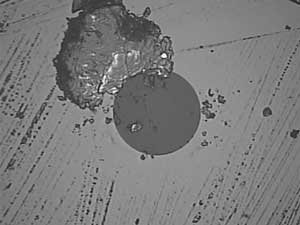 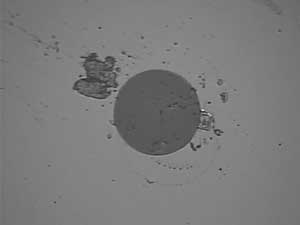
As you can see, the dirt is large compared to the size of the fiber (dark gray), and the core (not visible here) is only 9/125 of the overall diameter of the fiber! More on cleaning. See Product News below for links to vendors of fiber cleaning products.
See news about Fiber Optic Cleaning Videos on YouTube by ITW Chemtronics below.
Measurement Uncertainty: Everyone testing fiber optics should understand that every measurement has some uncertainty - whether you are measuring loss, length, wavelength, power, etc. Knowing that uncertainty is very important to interpreting the measurement. It's worthwhile to read and understand the issue of measurement accuracy covered in this page of the FOA Online Fiber Optic Reference Guide.
Worth Reading or Watching:
What's ahead for multimode fiber communication systems?
By Gastón E. Tudury, Ph.D., and Al Brunsting, Ph.D., Panduit
With networks like Ethernet moving to 40 and 100 Gb/s, current multimode fiber has been forced to a parallel optics solution, not considered acceptable by some users like Google, due to the masses of fiber needed for data centers. Rather than go to a singlemode WDM solution, these two suggest we should look at redesigning MM fiber, cutting the NA for higher bandwidth and maybe tweaking the VCSELs too. Lightwave.
In Pictures: The World’s Largest Solar Thermal Power Plant
BrightSource’s 370-megawatt facility near Las Vegas is taking shape, with lots of fiber optics being installed by FOA-certified techs..
http://www.technologyreview.com/news/428009/in-pictures-the-worlds-largest-solar-thermal/
Dark fiber providers may see $986M market as broadband data demand rises
Dark fiber is approaching a $billion market as broadband data demand rises. Read more on FierceTelecom.
WantTo Know Where Submarine Fiber Optic Cables Run?
There is a good map online by TeleGeography you can access here.
Choosing the right connector: APC vs. UPC
An interesting article from ADC on the differences in APC and UPC connectors makes the choice easier. Read more.
Benchmarking Fusion Splicing And Selecting Singlemode Fiber
We've been asked many times "How long does it take to splice a cable?" It's not a simple answer as it varies with the number of fibers in the cable and the work setup, including whether one or two techs are working at a job site. FOA Master Instructor Joe Botha of Triple Play in South Africa did his own analysis based on decades of experience both splicing cables and teaching others how to do it properly. This is one of the best analyses we have seen because Joe includes prep times as well as splicing times and differentiates between one tech and two techs working together. He adds some other tips on fusion splicing too. This should be mandatory reading for every tech and given to every student! Here is Joe's splicing analysis.
Joe also has an excellent writeup on how to choose singlemode fiber that helps understanding the different types of G.6xx fiber. Read it here.
And you will want to read Joe's report on splicing different types of SM fiber, including bend-insensitive (G.657) fiber. Read it here.
Videos on Firestopping: These free videos from UL and the International Firestop Council are good tutorials on firestopping. Go here to view the videos.
Micro-Trenching, Cable Removal (3/12)
Nano-Trench offers products for micro (or I guess they call it nano-) trenching and their website is very informative. They also have Kabel-X, a method of extracting copper cables from old conduit. Both websites are informative and interesting. Watch this video on the cable removal process!
Free - Mike Holt's Explanation Of The US National Electrical Code (NEC) For Communications Cables
Mike Holt is the acknowledged expert of the US National Electrical Code (NEC). His books and seminars are highly praised for their ability to make a very complicated standard (that is in fact Code - law - in most areas of the US) easily understood. Part of the appeal is Mike's great drawings that make understanding so much easier. Mike makes Chapter 8 of his book available free. It covers communications cables, telephones, LANs, CATV and CCTV, for premises applications. Even if you live in a region or country where the NEC is not the law, you may find this interesting.
Download Mike's Chapter Here.
Fiber Optic Crossword Puzzles For Entertainment And As A CFOT Certification Study Aid (2/12)
Pearson Technologies Inc., a 32-year fiber optic training, technical and marketing consulting firm, announces availability of a free training and certification tool. This tool is a free set of crossword puzzles on the terms of fiber optic installation and products. This set assists those studying fiber optic installation or planning to take the Fiber Optic Association (FOA) Certified Fiber Optic Technician (CFOT) certification examination. The four puzzles are for: light and fiber terms, cable terms, connector and splice terms, optoelectronics and testing terms.
The puzzles can be viewed and printed from: http://www.ptnowire.com/resources.htm or http://www.ptnowire.com/CFOT-Puzzles-vb.pdf. Individuals can receive the answers by email request.
For additional information, contact Pearson Technologies Inc. at: 4671 Hickory Bend Drive, Acworth, GA 30102, at (770) 490-991, or via e-mail at fiberguru@ptnowire.com.
New Eric Pearson Books (2/12)
  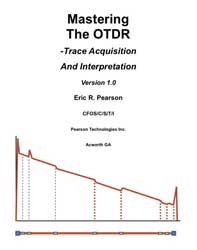
Pearson Technologies Inc. announces the release of three new books, Professional Fiber Optic Installation, The Essentials For Success, Mastering Fiber Optic Connector Installation and Mastering The OTDR.
Based on 31 years of experience, laboratory testing, development, and training of more than 8000 installers, these books is suitable for training, installation, personnel certification, and reference. Eric's books are perhaps best described as fiber optic "cookbooks," full of detailed directions that reflect many years of tesing in his courses. They are valuable references for the fiber optic tech.
For additional information. contact Pearson Technologies Inc., www.ptnowire.com, fiberguru@ptnowire.com, 770-490-9991
Fiber Optic Cleaning Videos on YouTube
ITW Chemtronics has three fiber optic cleaning videos on  covering Dry Cleaning, Wet-Dry Method, FiberWash and Combination Cleaning. They are good explanations of cleaning processes - the Wet-Dry is especially interesting. covering Dry Cleaning, Wet-Dry Method, FiberWash and Combination Cleaning. They are good explanations of cleaning processes - the Wet-Dry is especially interesting.
A Documentary Treasure on the History of the Internet
15 minutes of a rarely-seen BBC documentary demolish the myth that ARPAnet was inspired by nuclear war, and explain the far more intriguing truth.
http://www.technologyreview.com/blog/mimssbits/26719/?nlid=4433
Ensuring Distance Accuracy On OTDR Measurements
By JDSU.
Broadband Properties Webinar Archives

Lots of interesting webinars, mostly on FTTH. Go here.
FTTX Networks
An ADC white paper on how they work and how networks are upgraded to FTTH. http://connectedplanetonline.com/images/CP-ADC3-WhitePaper-v4.pdf.
JDSU Application Note On "Qualifying FTTH Network before Equipment Installation"
Another great paper from JDSU covering FTTH PON networks is available for downloading. It gives an overview of FTTH architecture, cleaning connectors then testing the cable plant with OTDRs and OLTSs. This paper will help you understand why OTDRs can be confusing on PONs!
Best Practices For Wireless Backhaul Network Upgrades
Joan Engebretson, Contributing Editor of Connected Planet has written a very good overview of how fiber is essential to the operation of cellular wireless systems. Everybody probably knows that fiber is used to connect towers into the telecom network - they call it backhaul - but her article also covers the new appliations to replace bulky, heavy, lossy coax up the tower to the antennas. http://connectedplanetonline.com/images/CP_ADC2_WhitePaper.pdf.
Fiber Optic Safety Poster
We've had numerous requests to reprint our guidelines on safety when working with fiber optics, so we have created a "Safety Poster" for you to print and post in your classroom, worksite, etc. We suggest giving a copy to every student and installer.
Corning now offers videos on  . Lots of interesting videos, some technical, some sales, but all good information. . Lots of interesting videos, some technical, some sales, but all good information.
US Conec's videos on cleaning fibers - show's the results of proper cleaning.
Webinars of Interest
Broadcast Engineering Magazine - Fiber Optic Testing
FOA President Jim Hayes presents an overview of fiber optic testing for all applications. Available on Demand. Sign up here.
Multimode Fiber Trends from TIA's Fiber Optics LAN Section
Ryan Chappell, Draka Communications, looks at the evolution of multimode fiber, examines its current usage and shares predictionson its future Available on-demand at: http://www.brighttalk.com/webcast/7182/play
OSP Magazine Webinars
OSP Magazine (OSP as in outside plant telco) is now offering a number of interesting webinars that cover fiber topics, including network design and specialized components. http://www.ospmag.com/events/web/
Multimode Fiber Characterization Launch Condition Considerations - new ap note from JDSU
JDSU Reference Guide to Fiber Optic Testing – Volume 2 Published
The second volume of the JDSU series on fiber optic testing has been published. Volume 1 focused on Basic Fiber testing and Volume 2 is geared toward fiber optic installers, project managers, telecom technicians and engineers who need to understand fiber networks. Volume 2 also covers Chromatic Dispersion, Polarization Mode Dispersion, Attenuation Profile and Fiber Link and Network Characterization. A 3rd volume, a glossary of fiber optic terms, is also available for download.
This is a "MUST HAVE" for all fiber optic techs. Download your free copies here.
We used this book as one of our references in creating a new page in the FOA Online Reference Guide on chromatic dispersion (CD) and polarization-mode dispersion (PMD).
Careers in Fiber Optics: Brian Smith. A 1998 book on fiber optic jobs is a bit dated, but a free overview is on Google Books and worth a look at it online.
Dirt!
As much as 70% of the problems associated with deploying fiber to the home result from something as simple as dirty connectors according to JDSU. Telephony Online.
US Conec's videos on cleaning fibers - show's the results of proper cleaning.
Good Technical Websites
American Polywater (http://www.polywater.com/) has one of the best technical website for cable installers. Here is a rundown on some new material on their site.
Cable Installation using "Push" or "Push/Pull"
Polywater's new Pull-Planner™ 3000 Software allows a "pushing force" variable in pulling tension calculations. Read a White Paper that quantifies the push contribution and compares calculation results to field experience. --
http://www.polywater.com/pushing.pdf
Pulling Cable Through Water?
Read a Product Spotlight on Polywater® + Silicone™, Polywater's new generation underground lubricant. Continued reduction of friction when pulling through water is only one of the unique features of this lubricant. --
http://www.polywater.com/NNNBSL.pdf
Check out their website, especially “Videos,” “Engineer’s Corner” and “Calculators.” http://www.polywater.com/NNNBSL.pdf

" Heard on the Street" is a monthly online newsletter from Frank Bisbee of Communications Planning Corporation that covers the telecommunications and cabling businesses. Each month includes news from manufacturers, trade associations and professional societies like the FOA. You can read the current issue and back issues online.

JDSU has announced the See the Light webinar series, a four-part program designed for anyone involved in the installation, maintenance, and repair of fiber optic systems. It begins with fiber inspection and cleaning and then covers the basics of fiber testing. The webinar series then continues with the more advanced optical time-domain reflectometer (OTDR) and fiber local area network (LAN) testing challenges. More information on the series.
IGI is offering a series of webinars on topics of interest to those in the communications industry. You can join them live ir download from the archives. IGI WEBINAR ARCHIVES UP AND RUNNING - VISIT TELECOMBRIEFINGS.COM TO DOWNLOAD!
IGI, a major market research and technology reporting company (the "Active Optical Cables" below) is offering a a free one year subscription to one of our fiber optics newsletters to FOA members. All they have to do is to send IGI an e-mail stating which newsletter they would like to get. See http://www.igigroup.com/nl.html for a listing of IGI Newsletters.
-
- FOA Tech Topics -
A Fiber Optic Tester In Your Pocket? (See the video on  ) )
Yes! The camera in your cell phone is sensitive to infrared light - lots more than your eye - and can detect light in an optical fiber or from a transmitter. Chris Hillyer,CFOT/CFOS/I, Master Instructor, Northern California Sound & Communication JATC brought this to our attention.
 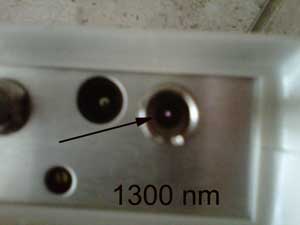
If you have an old cell phone, try it too. Our experience is that older cell phone cameras have better sensitivity at IR wavelengths than newer phones, so you may want to toss that old phone into the toolbox.
- FOA Technical Bulletins
- How do you design and manufacture fiber optic systems? Choose and install one to serve your communications needs? Troubleshoot problems? The FOA Fiber Optic Technical Bulletins will provide step-by-step guidelines to help you. All are PDF files you can download, print and use.
- Testing Update
- Are there really 5 different ways to test optical fiber cabling after installation? Why so many? How do the measurements - and more importantly the measurement results - differ? What are the advanteages and disadvantages of each method?
- Why are there 4 ways (maybe 5) to test fiber optic cables?
- Do OTDRs and OLTS tests give the same results?
-
- New Tech Topics
- Industry standards updated to include international standards
- Updated link specs for fiber optic networks - now includes 10/40/100G Ethernet.
Product News
AFL Releases Rugged Indoor/Outdoor Breakout Fiber Optic Cable

AFL introduces a new product line of rugged indoor/outdoor breakout fiber optic cable. Designed to support cable terminations and connector configurations that require more strength and durability, these new cables feature a reinforced core configuration anchored by a robust, water-blocked sub-cable construction and stranded design. Additional strength elements allow for a wide variety of termination schemes. Either via direct termination with wedge-type retention systems common in industrial connectors or via a fan-out configuration, AFL's Indoor/Outdoor Rugged Breakout Cable provides a highly flexible solution that can be tailored to the application. The cable family is available ranging from two to 12 optical channels and is qualified to the UL 1666 Riser standard. MSHA-rated cable is also available. For additional information on AFL and its cable products and accessories, visit www.AFLglobal.com.
AFL now offers their launch and receive test cables for OTDRs (they call them "rings") made from bend-insensitive fibers too.
Uraseal FOD-40 Drop Splice Protection Kit
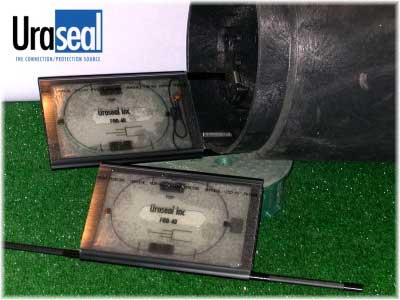
Uraseal has developed a procedure allowing the use of round cables up to 8mm (5/16") in diameter with the FOD-40 kit. This procedure allows the technician to attach round cables to the channels in the FOD-40 kit, where the remaining steps for preparing and filling the kit remain the same. For more information you can download the FOD-40 splice kit instruction sheet at this link:
http://www.urasealtraining.com/Instructions/FOD-40rda8.pdf
Videos On Installing Valdor Crimp-On Connectors
Valdor just released these short SP and ST connector videos demonstrating the simplicity of field installation.
SP & ST field installation videos: http://youtu.be/RggqruyagMc and http://youtu.be/9to5-kxTEPA
Valdor company and product overview: http://youtu.be/hK-cq2d8ofo
OTDR Software for Standardized Cable Plants
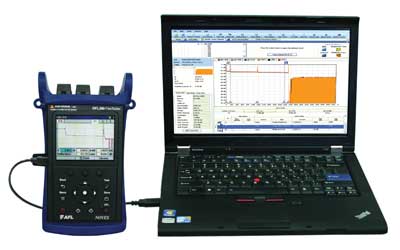
Noyes has introduced new software for their OTDRs called Test Results Manager which helps viewing and analyzing OTDR traces. In addition, it can compare results to required performance for networks like 10G Ethernet and certify the fibers for those networks. There is an interesting note on standards here. The standards for the fiber optic cable plant required to support IEEE 802.3ae 10G Ethernet are specific to the network (see here for a list of most network fiber cable plant requirements) and if testing is being done to determine if the cable plant will support this network, testing must be done to the network standards not the generic cable plant standards to ensure proper operation. This is another common misconception of standards. Read more on the Noyes TRM(r) software.
Restoration Kits
TriNet Communications offers restoration kits for field emergencies (e.g. backhoe fade), covering both temporary and permanent repairs. Kits include cable with a specified number of fibers, splice cases and mechanical splices. Here are links to specs on both temporary and permanent repair kits.
Temporary Restoration Kits
Permanent Restoration Kits
Handheld OTDR
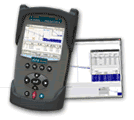
Advanced Fiber Solutions has introduced a new compact portable OTDR that offers high resolution (to 1m) and light weight (1.6 pounds, 0.72 kg) plus numerous wavelength and range options. Here is more information.
Magnetic Cable Management Hardware
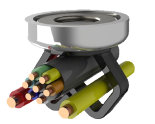
Mounting hardware for cable management in equipment or telecom rooms can be difficult - what do you attach things to? But RES has a unique idea - use magnets to hold the hardware on racks or any metal parts. Neat idea, see their products here.
Micro-Trenching, Cable Removal
Nano-Trench offers products for micro (or I guess they call it nano-) trenching and their website is very informative. They also have Kabel-X, a method of extracting copper cables from old conduit. Both websites are informative and interesting. Watch this video on the cable removal process!
Protecting Pedestals From Rodents
Pedestals and underground vaults can be damaged by rodents who come up through the base and damage cables. Uraseal "Drain N'Seal" foam deters mice from taking up residence in your pedestals. They have some good videos on using their product.
A Cable Tie That's Fiber Friendly
We're always warning installers not to tighten cable ties too tightly around fiber optic cable (or UTP copper cable either!) A better choice is the hook and loop fastener ties (Velcro is one trade name), but there is another type, the Mille-Tie. It's an open tie that can be used at any length, then cut off and the remainder used also. Take a look a the video to see how it works.
Mille-Tie Video: http://www.youtube.com/watch?v=QPVTQGKmcvE
Used Test Equipment – Buy or Sell
http://www.testequipmentconnection.com/
Have you read the FOA Tech Topics on Cleaning?
More links on cleaning:
Westover
- AFL
ITW Chemtronics
Cleantex Alco Pads
MicroCare
Seiko-Giken
-
- FTTH Notes:
Broadband Properties: Latest Issue has lots of FTTx News.
Google Map Shows Worldwide FTTx Projects
One of the better sites to track FTTx projects is this Google maps application that shows projects on a world map with details on the project.

Click on the map above or here to view the interactive web map.
Testing FTTH
JDSU shows how to test a PON with an OTDR: http://www.jdsu.com/other-literature/PON-OTDR_fop_an_ae.pdf
-
- Want To Learn More About FTTx?
- The FOA has created a special FTTx resources section of our website with a FTTx links page with lots of links to news, market reports, technical articles and vendor technical and product information. Here is a great place to start learning more about FTTx.
- FOA's CFxT FTTx Certification Program Explained
- Read the Broadband Properties article about the FOA FTTx certification program. Read the article about FOA President Jim Hayes being honored for his work promoting FTTH.
-
|

